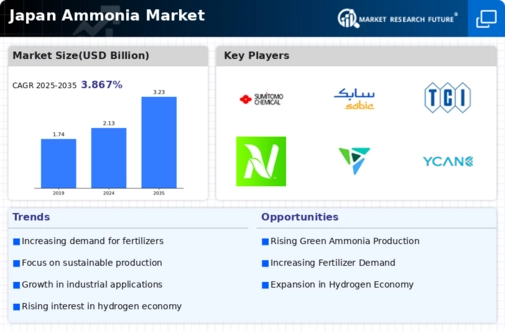The Japan Ammonia Market is characterized by a dynamic landscape where a mix of domestic and international players strive for competitive advantage. This market is primarily driven by the demand for ammonia in various applications, including fertilizers, industrial chemicals, and as a clean energy source. The competitive insights reveal that companies are focusing on innovation, production efficiency, and strategic partnerships to enhance their market positioning. With Japan's commitment to sustainability, the market is also witnessing a shift towards greener ammonia production technologies, further intensifying the competition among key players.
In addition, regulatory frameworks and environmental policies play a critical role in shaping market dynamics and influencing strategies adopted by the companies involved.Sumitomo Chemical possesses a strong foothold in the Japan Ammonia Market, leveraging its extensive experience and expertise in chemical production. The company's dedication to innovation is evident in its investment in research and development, which aims to improve production processes and enhance product quality. Sumitomo Chemical's established supply chain and distribution networks allow it to efficiently serve both domestic and international markets, ensuring a stable presence in the ammonia sector.
The company is known for its ability to respond swiftly to market trends and customer needs, positioning itself favorably amid competition. Its strategic collaborations with other industry players further bolster its competitive edge in the ammonia landscape.SABIC, a prominent player in the Japan Ammonia Market, has established a significant market presence through its commitment to high-quality products and sustainable practices. The company's portfolio includes ammonia as one of its key offerings, catering to the needs of various industries such as agriculture and petrochemicals. SABIC's strengths lie in its advanced production technologies, which enable efficiency and environmental sustainability.
The company has actively pursued mergers and acquisitions to expand its operational capabilities and market reach within Japan, allowing it to enhance service delivery and diversify its product offerings. Additionally, SABIC’s investments in innovations aimed at reducing environmental impact align with Japan’s sustainable development goals, further solidifying its position in the ammonia market. Through these strategic maneuvers, SABIC continues to adapt to the evolving dynamics of the Japanese ammonia landscape, ensuring its competitive viability.



















Leave a Comment